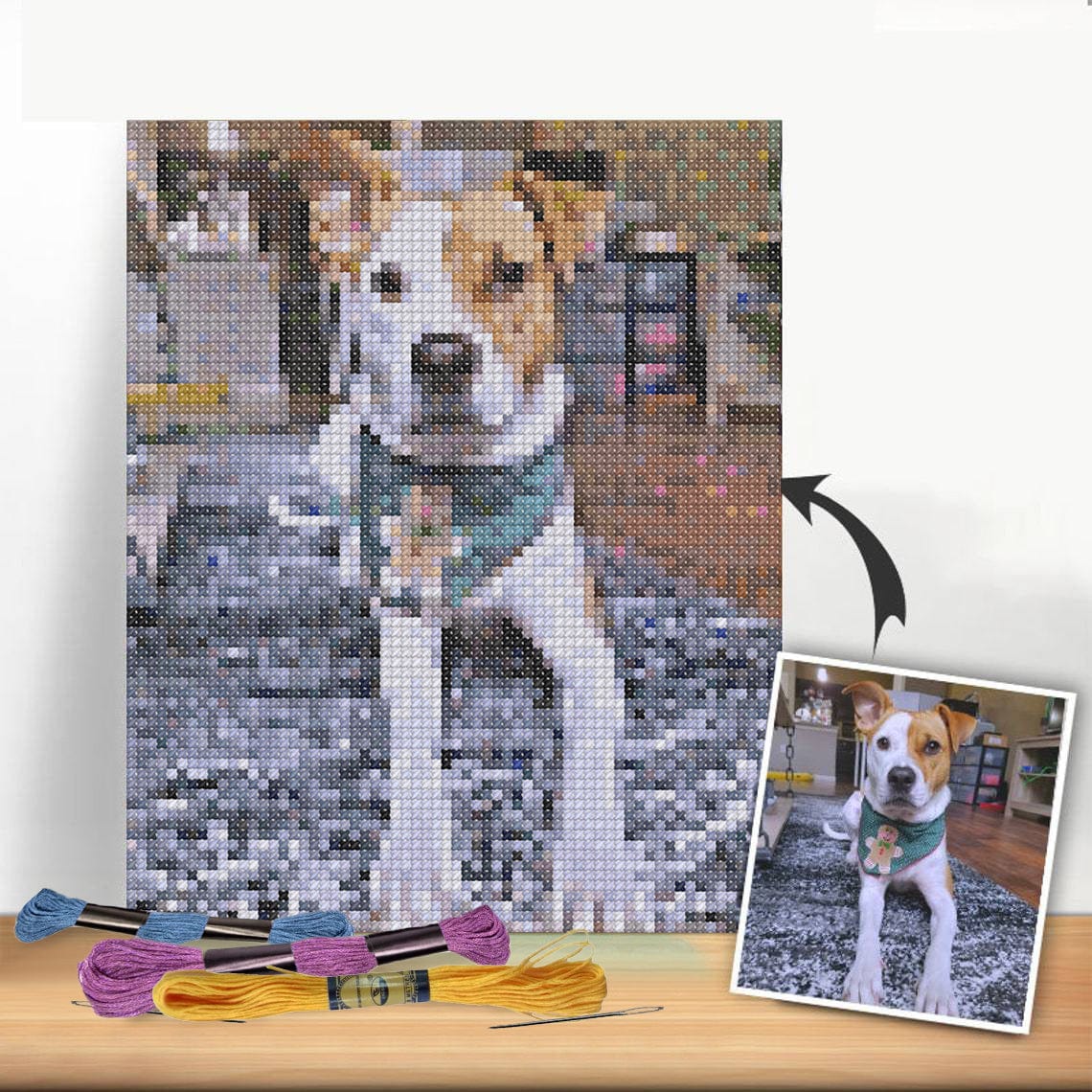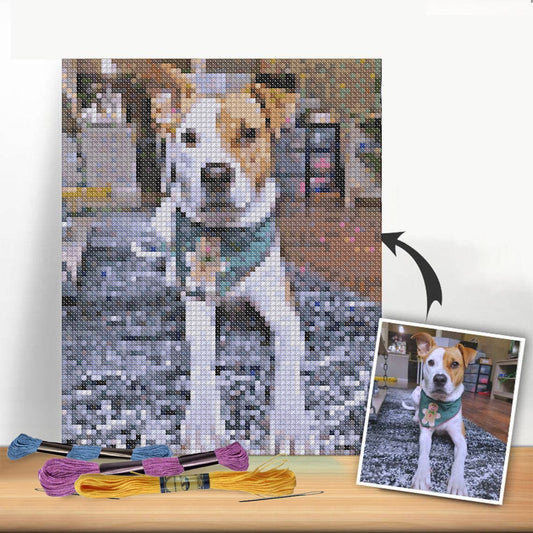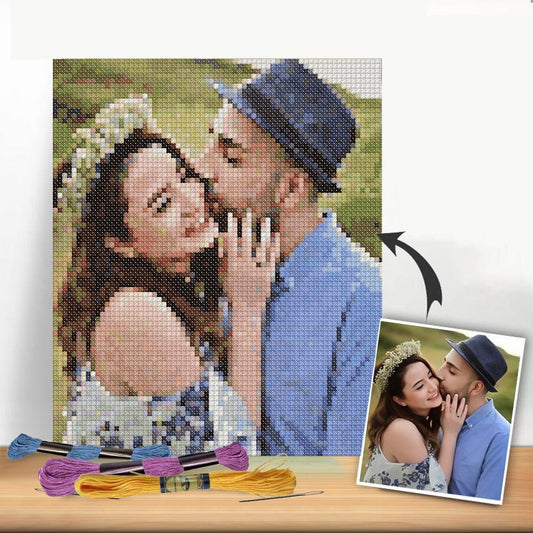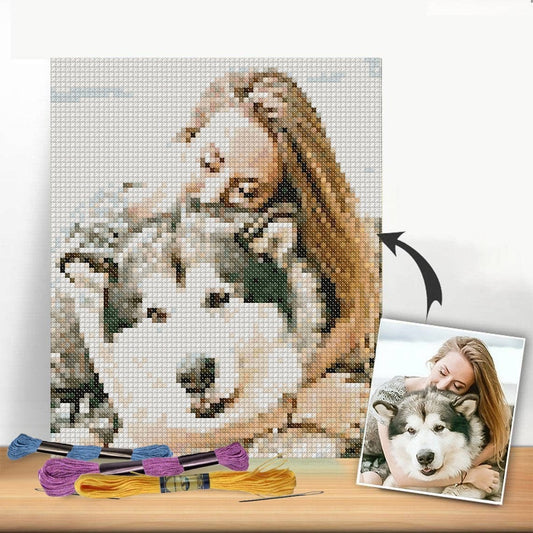The Rise of Cross Stitch Tattoos
In recent years, the world of tattooing has seen a fascinating trend emerge: cross stitch tattoos. This unique style blends the delicate art of embroidery with the permanence of body ink, creating a visually striking and culturally rich form of self-expression.
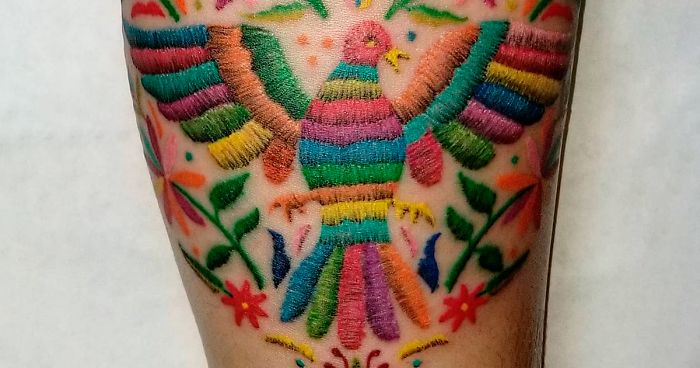
What Are Cross Stitch Tattoos?
Cross stitch tattoos are designed to mimic the appearance of traditional cross stitch embroidery on the skin. They feature X-shaped stitches that create intricate patterns, often with a raised, textured look that gives a three-dimensional effect. Unlike conventional tattoos, cross stitch tattoos employ specialized techniques to provide depth and realism, making them stand out visually.
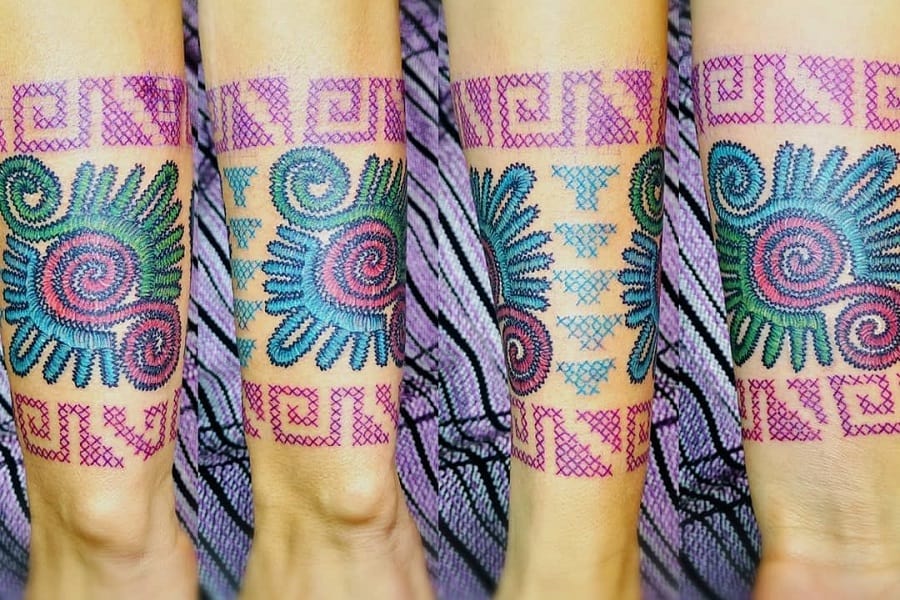
Historical Context
The art of cross stitch itself has a rich history, with some historians tracing its origins back to the Tang Dynasty (618-906 AD) in China. Over centuries, cross stitch evolved into a popular craft across various cultures, often used to create intricate samplers and decorative pieces. This historical backdrop has inspired contemporary tattoo artists to blend this traditional craft with modern body art.

The Artistic Process
Creating a cross stitch tattoo requires meticulous technique. Skilled artists typically use a back-and-forth motion to apply thicker ink, emulating the look of real thread on fabric. This method not only enhances the visual texture but also helps ensure the design retains its shape over time. The artist's skill is crucial, as improper technique can lead to fading or distortion of the design.
Influential Artists
One of the key figures in popularizing cross stitch tattoos is Turkish artist Eva Krbdk. Known for her watercolor and embroidery-inspired tattoos, Krbdk has gained recognition for her ability to transform traditional stitching techniques into stunning body art. Her work often reflects a deep appreciation for embroidery's cultural significance, particularly within Turkish heritage.
Cultural Significance
Cross stitch tattoos resonate with those who appreciate both tattooing and embroidery. They serve as a form of self-expression while honoring traditional crafts. For many individuals, these tattoos can symbolize nostalgia for childhood hobbies or familial connections through crafting. They also represent a unique way to carry a piece of cultural heritage or personal history on one's skin.
Design Variations
The designs for cross stitch tattoos are incredibly diverse. They range from delicate floral motifs to playful characters reminiscent of childhood crafts. Some artists incorporate modern elements alongside traditional patterns, creating a fusion that appeals to a broader audience. This adaptability allows for personal expression through customized designs tailored to individual tastes and meanings.
Growing Popularity
The rise of social media has played a significant role in the increasing popularity of cross stitch tattoos. Platforms like Instagram have allowed artists to showcase their work to a global audience, inspiring both tattoo enthusiasts and traditional cross stitchers to explore this unique art form. The visual appeal of these tattoos, combined with their cultural and personal significance, has contributed to their growing demand.
Challenges and Considerations
While cross stitch tattoos are visually stunning, they do come with some challenges. The intricate nature of the designs often requires longer tattooing sessions, which can be more uncomfortable for the client. Additionally, the raised texture of these tattoos may require extra care during the healing process. Potential clients should also consider that the level of detail in cross stitch tattoos means they often work best on larger areas of the body.
Conclusion
Cross stitch tattoos represent a fascinating intersection of history, culture, and artistry. As this trend continues to grow, it not only celebrates the craft of embroidery but also redefines how we perceive body art. With skilled artists like Eva Krbdk leading the way, cross stitch tattoos are likely to remain a beloved choice for those seeking unique and meaningful ink. These tattoos serve as a testament to the evolving nature of body art and its ability to incorporate traditional crafts into contemporary expression.
Custom Cross Stitch Kits
-
Custom Cross Stitch Tapestry Kit | Just Upload Your Photo!
Regular price From €35,95 EURRegular priceUnit price per -
Custom Couple Cross Stitch Tapestry Kit | Just Upload Your Photo!
Regular price From €35,95 EURRegular priceUnit price per -
Custom Pet Cross Stitch Tapestry Kit | Just Upload Your Own Photo!
Regular price From €35,95 EURRegular priceUnit price per
